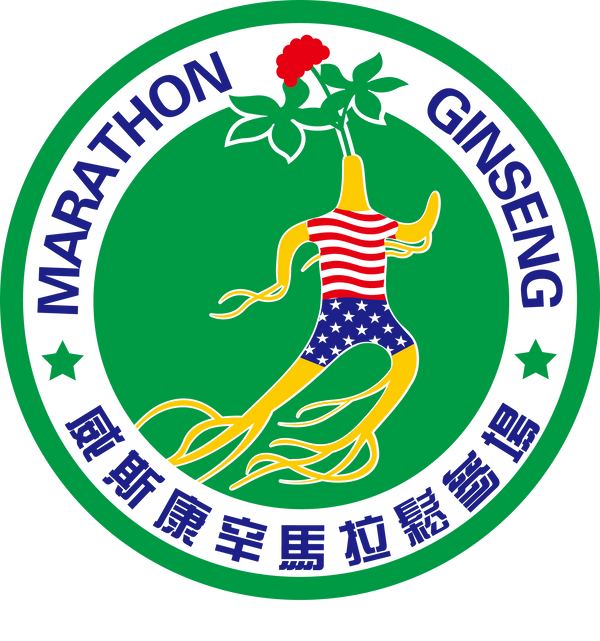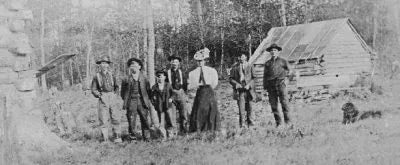The History of the American Ginseng Industry in Marathon County and its Mysterious Origins with Chinese Trade
By Xi Luo, original in Chinese with Google Translation
In the late 19th century, Marathon County began to profit from a mystical trade. Here it produces a root with a magical effect on life. This root is the Wisconsin ginseng. It is highly regarded for its aphrodisiac effects. Once upon a time, wild American ginseng spread throughout eastern North America, north to Canada (Montreal area), south to northern Florida. In the first half of the eighteenth century, the export trade of ginseng from America to France grew rapidly. However, over-harvesting and incorrect processing caused the American ginseng to lose its reputation in the East. American ginseng was first exported to China by John Jacob Astor in the late 18th century, which became an important commodity in US- China trade ever since.
In Wisconsin, Indians used American ginseng as a medicine long before white colonists arrived. By the 1840s, white settlers acquired Wisconsin ginseng extensively from Indians for export. The ginseng trade in Marathon County started relatively late, starting in the 1870s, but played an extremely important role in the subsequent export of American ginseng. From the 19th century to the 20th century, most of the wild Wisconsin ginseng was sold to China.
Some people think that the ginseng is food, which belongs to the agricultural products; while the others think the American ginseng came out of the wild, so similar to wood logging. Like wood, American ginseng was a natural resource, and people just take and profit from it. Wild American ginseng, however, is a fragile plant that takes a long period of growth and neither Indians nor whites have any idea how to breed it. Indians used to be less dependent on ginseng in the past so this plant has been able to reproduce naturally for centuries, but once large-scale export acquisitions began the American ginseng resources in Wisconsin were quickly at risk of being depleted.
The most direct solution is to find artificial cultivation of American ginseng method, but it is not easy. American ginseng needs 4-5 growth years to mature, and the fragility of plants make it hard to grow. However, due to the large demand, there were still many people trying. In the 1880s, George Stanton successfully cultivated American ginseng for the first time. His success led to the “ginseng fever” of the late nineteenth century. From the west coast of the United States to the Midwest, many American farmers use the virgin farmland for American ginseng cultivation. In Marathon County, Reinhold Dietsch and Frank Volhanrd also tried the cultivation of ginseng and literally sowed the seeds for Wisconsin ginseng.
However, in 1905, a blight attacked the North American ginseng crops and caused heavy losses in ginseng farming. The painstaking efforts of the previous two decades were destroyed. However, HAMBURG’s four brothers, Walter, Edward, John and Henry Fromm, got involved in the industry when growers in the east and in the middle abandoned the cultivation of American ginseng. They set out to breed the silver fox, but because of the high cost of breeding it, they could only grow American ginseng and hope they could raise enough money to buy silver fox breeders. They were very young at the time, the youngest being Walter, 16, while the youngest, Henry, was only 10 years old. Their American ginseng business and silver fox breeding have all achieved great success in the United States. Part of the success of the American ginseng industry is due to the Fromm brothers who studied wild American ginseng and its habitat. After year after year trials, Fromm brothers mastered a better, newer approach to American ginseng cultivation. In addition to the Fromm brothers, there were three other companies in the Marathon County that were involved in the plantation of American ginseng in 1913. The results of these three companies were not immediately apparent and they were not the leaders of the Wisconsin ginseng industry until 1919.
Wisconsin ginseng was not a simple, stable industry; in fact, the ginseng market has proved to be exciting but full of risks. The industry was affected by many factors, some of which were beyond the control of growers like Fromm Brothers. The rise and fall of the Wisconsin ginseng industry relied heavily on the political relations between the Asian economy and Asian America. For example, in the 1930s, because of the chaotic political and economic conditions in China, the Wisconsin ginseng market also suffered a great deal. By the 1940s, the Sino-Japanese War and the subsequent World War II all brought a more serious blow to the American ginseng market. Until World War II, with the restoration of political and economic relations with Asia (especially Hong Kong, which became the major exporter of Wisconsin ginseng at the time), the demand for Wisconsin ginseng increased sharply and the number of new plantations also increased gradually. In 1948, only 78 acres of American ginseng was cultivated in Marathon County. In 1970, this figure increased to 154 acres. In 1978, the U.S. government introduced a policy of promoting trade between China and the United States, and its ginseng cultivation in Marathon County increased to 750 acres.
After the establishment of diplomatic relations in 1979, China and the United States ushered in the heyday of the production of American ginseng. There were 1,500 farmers in Wisconsin, with acreage of 3,000 acres. In the late 1990s, 90% of American ginseng growers went bankrupt due to competition and overproduction in Canada. Since entering the 21st century, Marathon County has nearly 200 farmers, planting area of 1,500 acres with annual output of about 500,000 to 600,000 pounds. This allows local farmers to bring 15 million US dollars in revenue. In 2009, China’s famous royal pharmacy “Tong Ren Tang” came to Marathon County and purchased a hundred thousand pounds of authentic Wisconsin ginseng. After 100 years, the descenders of the pioneers of Wisconsin ginseng farms in Marathon County finally gained the trust and recognition of more than a billion dark haired Chinese.
(The original was published in Chinese by World Journal in 2001)

